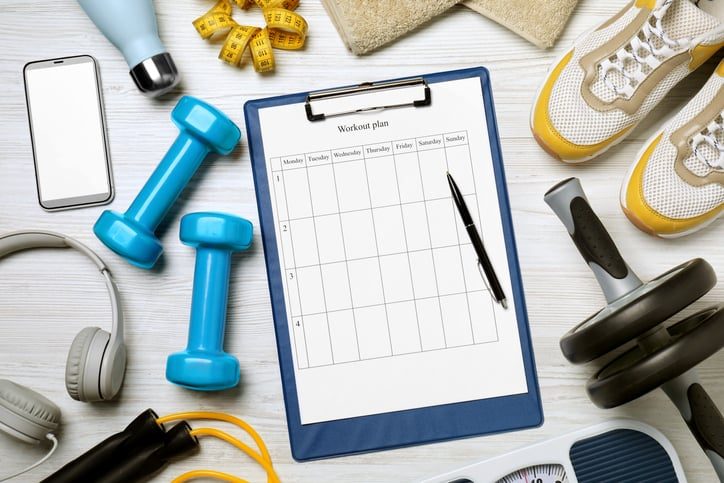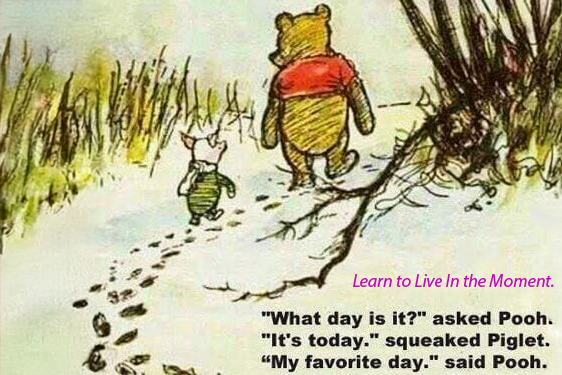
—
How to Create a Personalized Gym Workout Chart
If you’ve finally decided to get on the fitness bandwagon with consistency, congratulations, you have taken the first step towards being healthy. The initial motivation is maybe the most challenging part. However, to ensure that you get appreciable results for your hard work, it is imperative that your workout be strategic and organized. If by exercising you simply mean working out arbitrarily in some way or the other, then we’re afraid you may not be able to see the results that you had hoped for.
To bring consistency to your workout and ensure that you keep making trackable progress, you need a well-thought-out workout plan tailored to your fitness goals and preferences. Setting up your workout plan can be a bit overwhelming, because there are hundreds of workout options and exercises you can do, and choosing a few from among them can be a daunting task. Not to mention the other variables you have to choose like number of workout days, rest days, cardio days, etc.
But we’ll do all we can to help you create a personalized gym workout chart with this handy guide. By considering the following factors, you can take into account multiple variables and ensure that you have a workout plan at the end that is suited to your fitness levels and goals.
Steps To Create The Perfect Gym Workout Plan
Let’s begin with the steps you should take to create an effective workout plan.
Understand Your Goals
Before you get into the nitty-gritty details of your workout chart, you must first contemplate what your fitness goals are. Ask yourself, why have you decided to start working out? This is important because there are many variables in a fitness plan like the number of reps, weights, type of exercises, workout days, etc and your fitness goals are directly related to these variables.
Here are some examples of fitness goals:
– Weight loss: You may work out to lose fat and reach an optimum target weight
– Build muscle mass: You may be looking to bulk up and develop a hefty bodybuilder-like physique
– Boost endurance: You feel you have low stamina and want to exercise to increase your endurance
– Increase strength: You feel you have low body strength and want to work out to improve overall muscle strength
– Sports-specific workouts: You’re a professional athlete who requires sports-specific training to boost performance.
All of the above fitness goals will have vastly different-looking gym workout charts. Also, you may be in a position where you have more than one fitness goal from the above list. In that case, you can choose your primary goal first and then start integrating other goals into your fitness plan. The trick is to keep it simple and focused when you start. Also, multiple exercises contribute towards different goals.
Decide on Your Workout Days
Once you’re clear about your workout goals, the next step is to decide on your training frequency. This simply means how many days of the week you will exercise, and how many of them will you set aside for rest and recovery. This is a vital component of fitness plans because it lets you organize your free time. You’re setting up your workout regime amidst other commitments like work and family time. Whatever free time you have for exercising, therefore, needs to be well-organized so that you can be consistent.
The cardinal rule of setting up workout days is to never keep a 7-day workout schedule. A full week workout doesn’t give the body enough time to rest and repair itself. Beginners can start with a 3-day workout, while intermediate trainers find a 4-day workout week optimum. Experts and professional athletes want to keep at it with a strenuous 5 or 6-day workout.
Everyone in the gym has different fitness levels and goals. The worst thing you could do is try to mimic someone else’s workout intensity when your fitness levels do not match. Go at your own pace. It’s always best to go slow because you have all the time in the world to pick up your pace. If you take too much initially, you’ll stress out, won’t see results, and end up being demotivated.
Which Workout To Do on Which Days
The next tricky step in forming your workout plan is to dedicate your days to specific workouts. Should you keep arm workouts on Monday, and leg workouts on Tuesday, or vice-versa? Again, this step is directly related to your fitness goals. Aim to cover most muscle groups with compound exercises within your set workout days. You also have to ensure that your muscles get enough rest in between consecutive workouts.
Here’s an example of a basic 4-day workout split
Monday: Chest and arm muscles
Tuesday: Shoulder and back muscles
Wednesday: Rest
Thursday: Leg workouts
Friday: Abs and core muscles
Saturday: Rest
Sunday: Rest
Deciding On the Number of Sets and Reps
Again, this part of your workout routine should not be based on what your friends or colleagues are doing. Your strength and endurance will dictate the number of sets and reps you can do. Two additional factors can help you decide the number of sets and reps you should do:
– Volume of workout: This is the total amount of work that you’re doing in your entire workout. More volume equates to more body mass and increased endurance. So, if you’re looking to increase muscle mass and endurance, you should do more work, that is, have a higher number of sets and reps.
– Intensity: Intensity refers to the amount of weight you’re lifting. A higher intensity equates to increased strength. So, if you want to increase your muscle strength, you need to lift heavier weights.
Here’s a jumping-off point for the number of sets and reps you can keep as a beginner:
For building muscle mass: 6-12 reps with light or moderate weights
For body strength: 3-6 reps with heavier loads
As far as the number of sets is concerned, aim for at least 10 sets per week for every muscle group.
Choosing Your Exercises
Now that you have understood your goals and know which days of the week you can work out, only now can you decide on the specific exercises you should do. Here, too, you have a myriad of exercise options so it’s important not to get overwhelmed. Start with the simplest exercises that appeal to you. Initially, choose compound exercises over isolation workouts. There will be certain exercises that suit your body and joints better. Start with. Ensure you can hold proper form and technique. Keep the number of exercises in each workout to a bare minimum instead of packing your routine with multiple unnecessary exercises.
Progressive Overload
To see results, you will need to increasingly challenge your body with heavier weights or increased reps as you progress. This is the key to achieving your desired fitness goals since doing the same thing every week may not be ideal. Here’s what you can do to incorporate progressive overload into your routine
– Increase the weight gradually
– Increase the number of reps gradually
– Decrease rest time between sets
– Increase workout days
– Modify exercises for a more challenging workout
Conclusion
In this way, you can design the perfect exercise routine to fulfill your fitness goals. Your routine should take into account all the above factors to suit your preferences, your body, strength, and fitness levels.
If creating a personalized gym workout routine seems too daunting a task, you can always get professional help. Download the FITPASS app and sign up for a FITCOACH membership. Our highly sophisticated A-trained fitness assistant factors in multiple variables to design a self-evolving, customizable fitness routine that can serve multiple purposes like weight loss, muscle gain, endurance boost, etc. You can even provide your suggestions to modify your routine to suit you better. With such a personalized fitness routine, you’re bound to see amazing results in 6-12 weeks.
FAQs
What is a good gym workout routine?
A good gym workout routine should include multiple muscle groups over the whole body, cardio days, and adequate rest days for an optimum workout. It should be based on your fitness goals, current fitness levels, and preferences.
What is a good gym schedule for beginners?
Beginners can start with a 3 or 4-day gym workout schedule. Here’s an example of a beginner workout schedule.
Monday: Chest and arm muscles
Tuesday: Shoulder and back muscles
Wednesday: Rest/Yoga/Mild Cardio
Thursday: Leg workouts
Friday: Abs and core muscles
Saturday: Rest
Sunday: Rest/Yoga
Which workout plan is best for muscle gain?
For muscle gain your focus would be on doing at least 6-12 reps with challenging weights. Aim for at least 10 sets a week for each muscle group.
Here’s a sample muscle gain workout routine:
Monday: Back and Biceps
Tuesday: Chest and Triceps
Wednesday: Active Rest/Yoga
Thursday: Quadriceps, Hamstrings and Calves
Friday – Shoulders and Forearms
Saturday – Active Rest/Yoga
Sunday – Rest
—
This content is brought to you by FITPASS
iStockPhoto
The post How to Create a Personalized Gym Workout Chart appeared first on The Good Men Project.
Original Article










